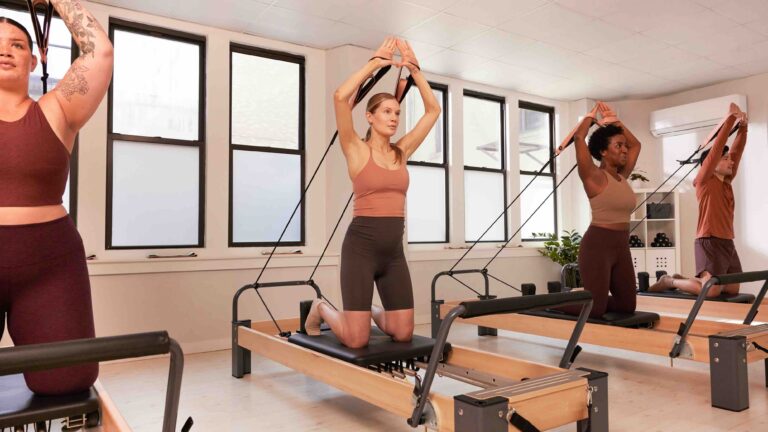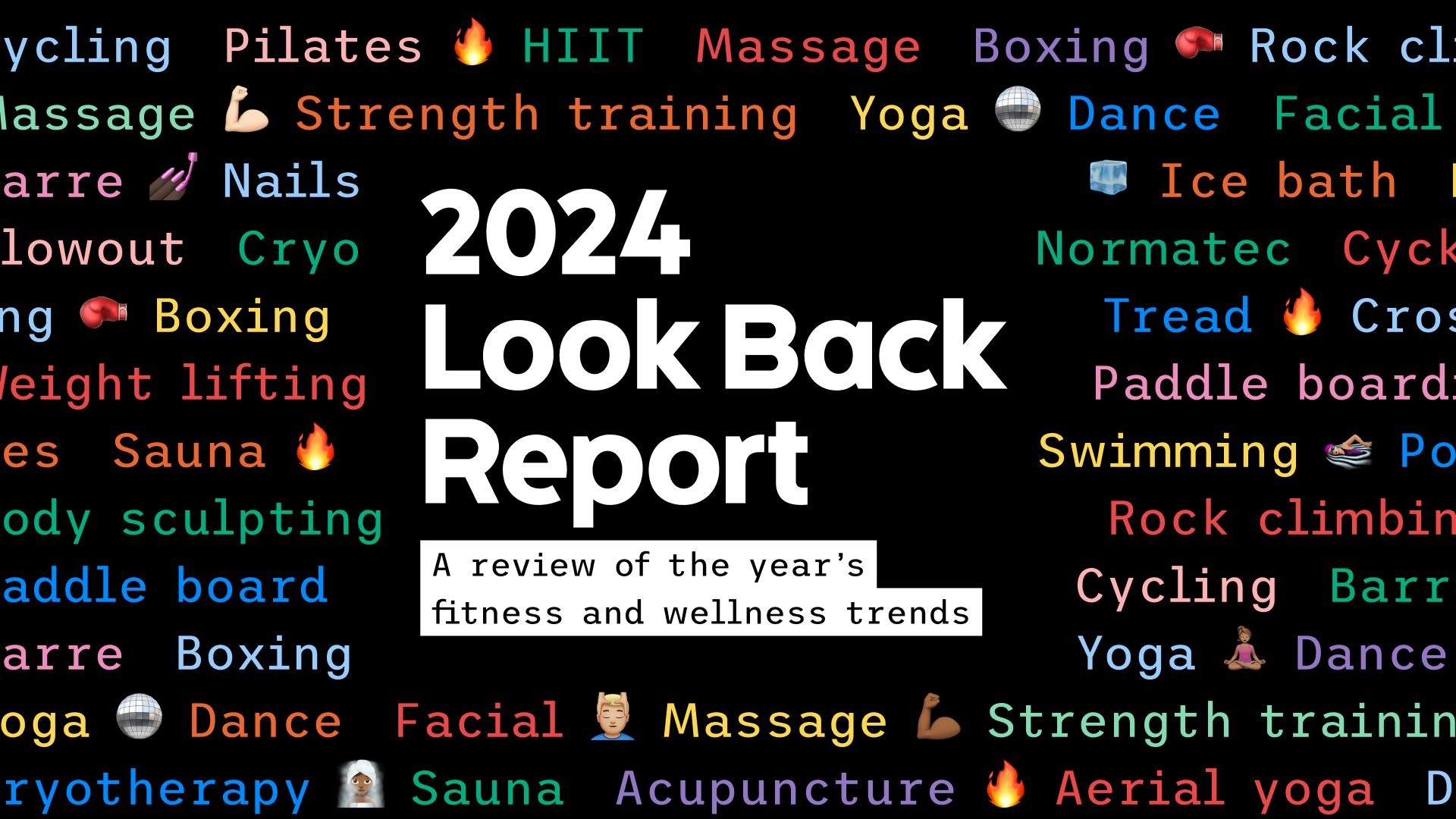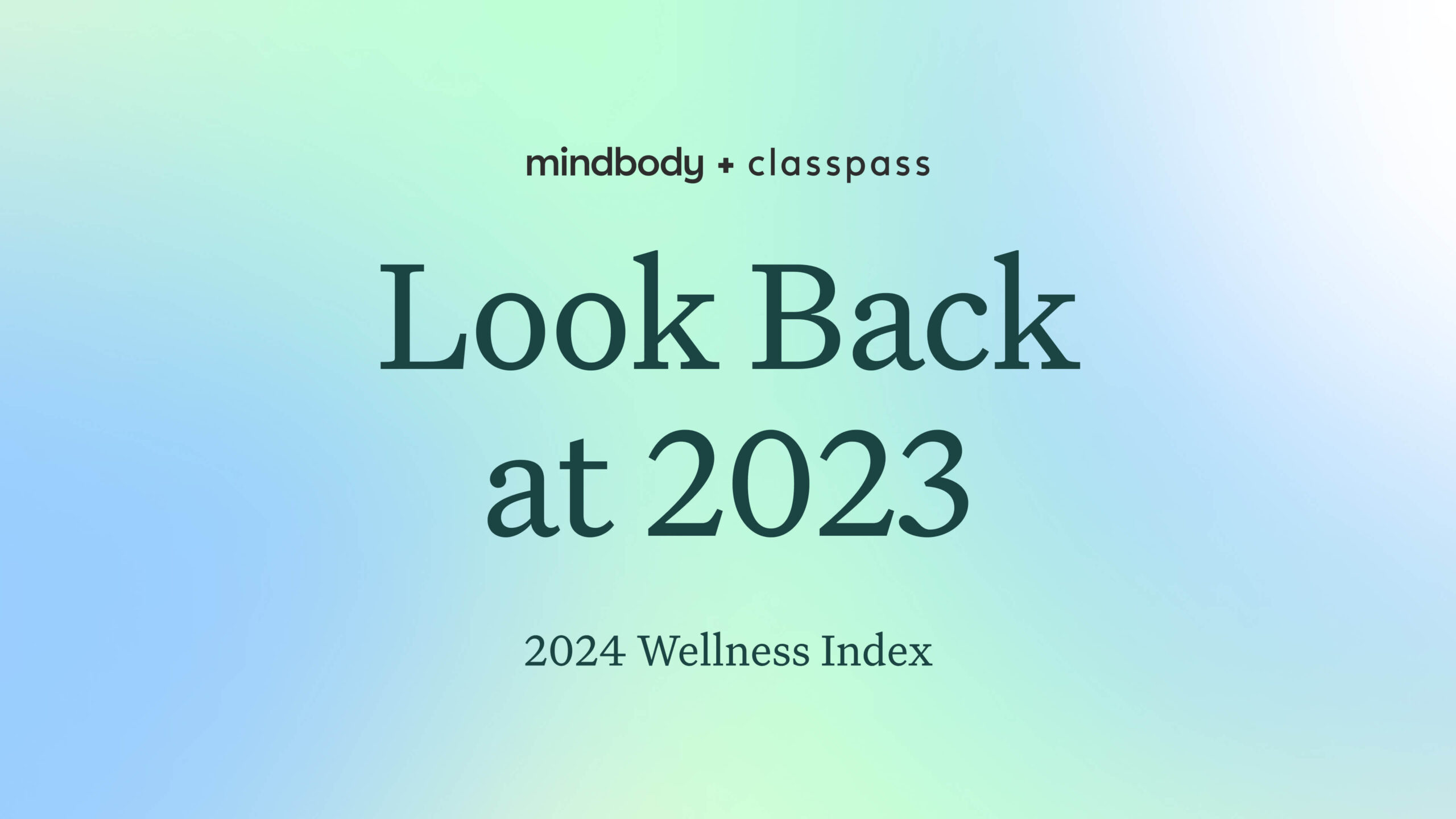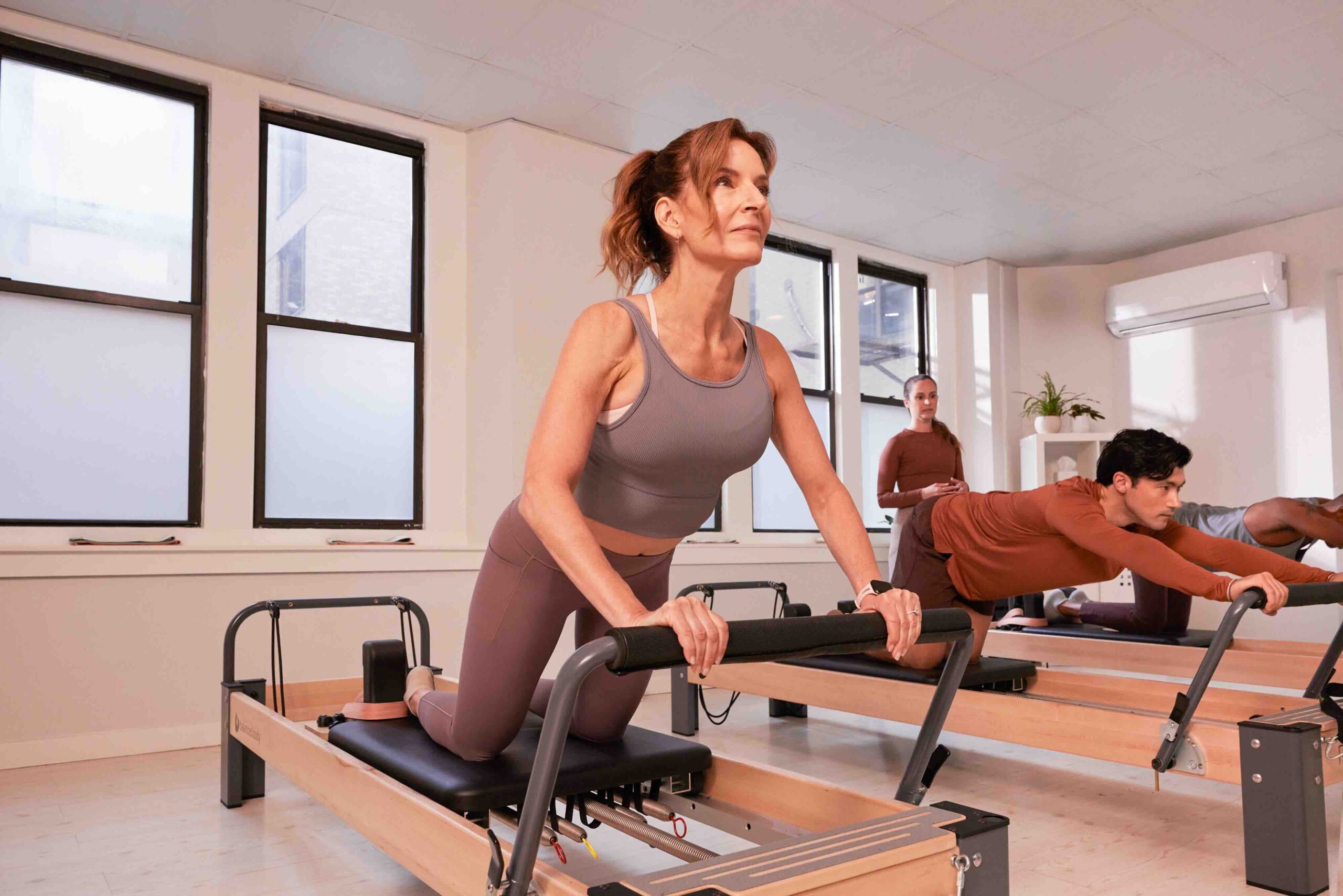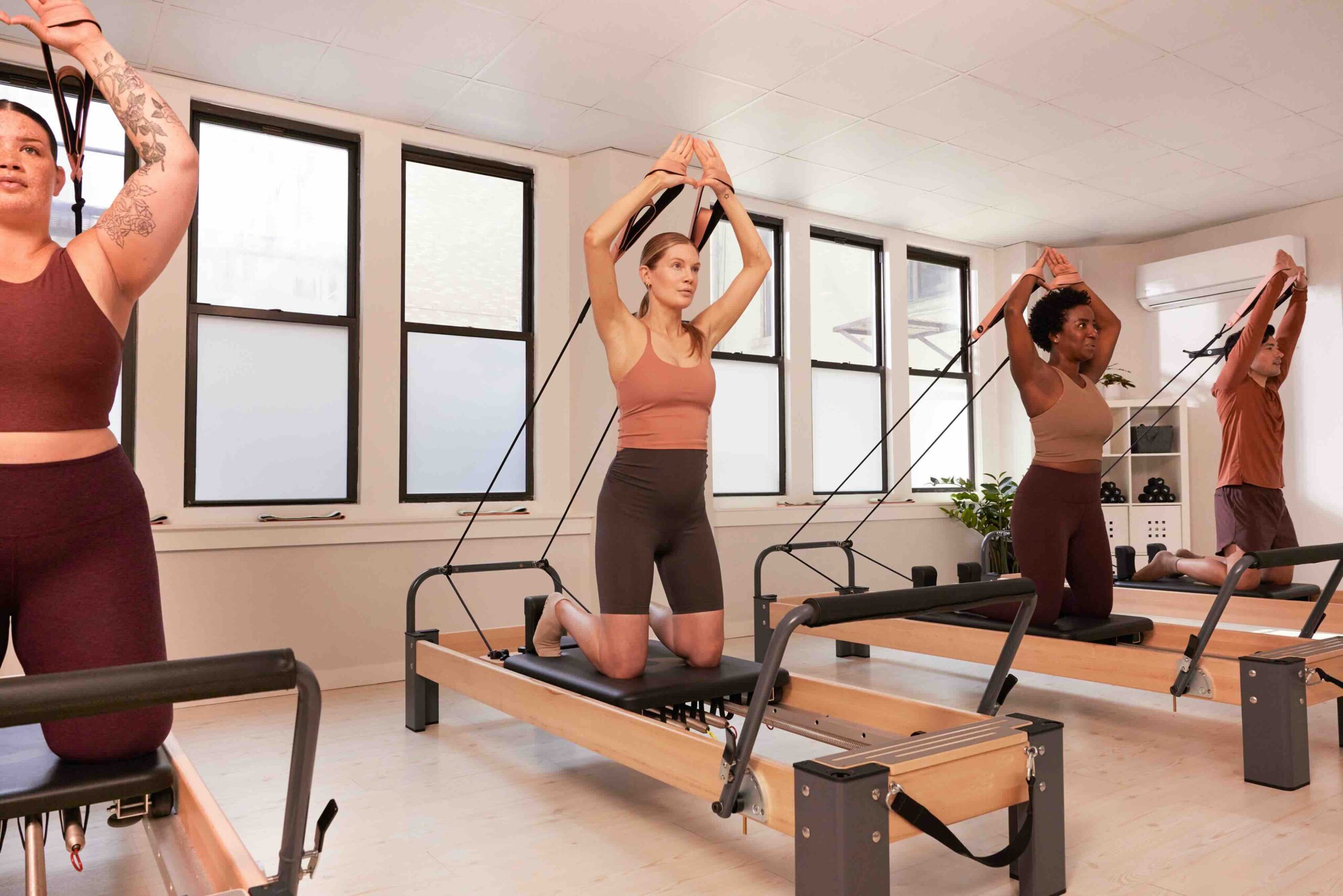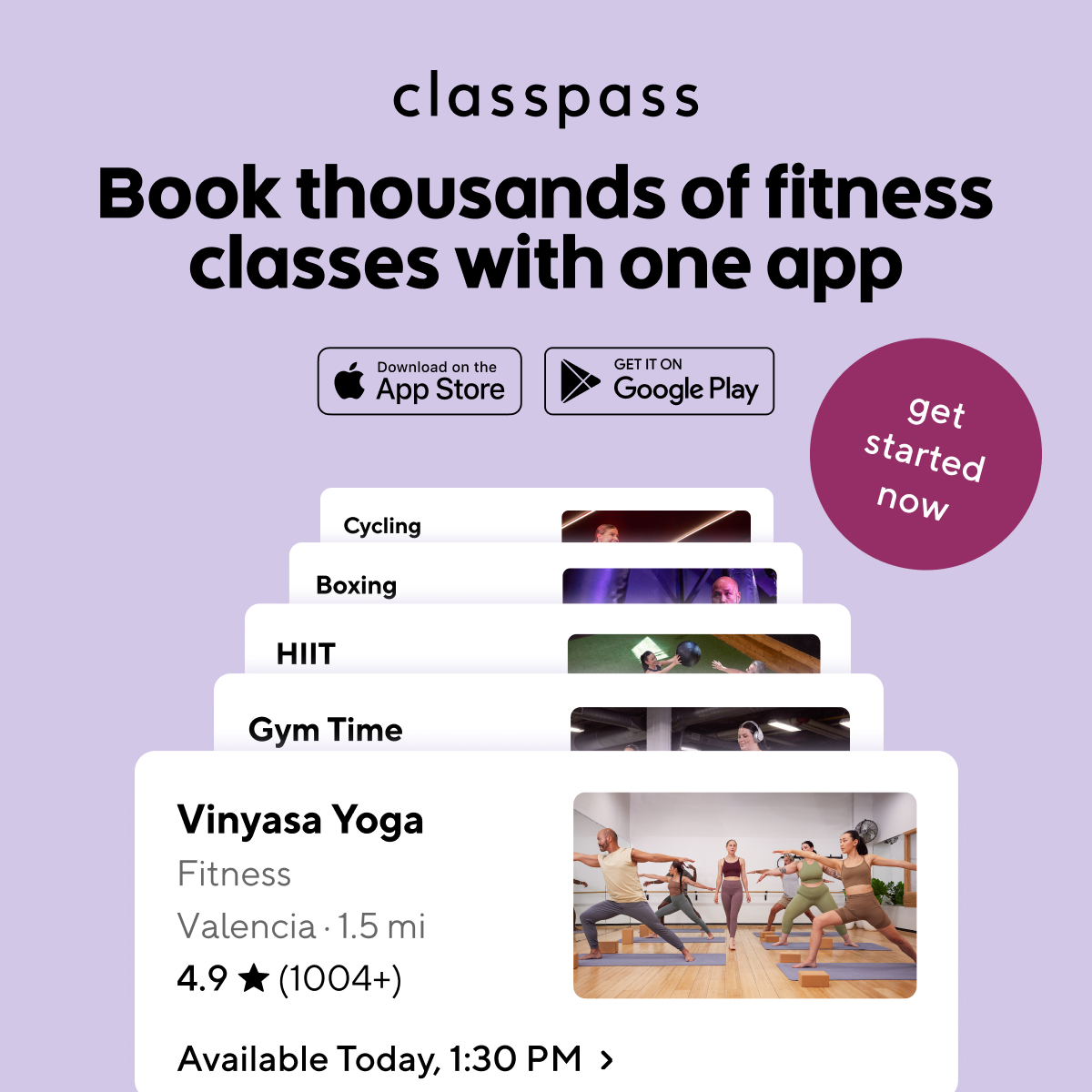If you’re new to Pilates, you might not know that Pilates can come in many styles, including classical, contemporary, mat, clinical, and reformer.
In this article, we’ll break down the differences between contemporary Pilates and classical Pilates to help you decide which approach you might like best.
Read on to find out more.
What is classical Pilates
Classical Pilates is the most traditional of Pilates methods.
This approach adheres to Joseph Pilates’ original concept. This practice, like yoga, is holistic, focusing on the entire body, mind and spirit.
In a classical Pilates class, you can expect to be taken through a sequence of movements that activate the entire body while focusing on your breath. Typically, classically trained teachers follow the original practice with few variations – ideal if you don’t like fast-paced HIIT-style classes where you don’t know what to expect next.
Some moves you can expect in a class include the hundred, leg circles, swan dive, spine twist, shoulder bridge and hip twists.
Beginners can participate in classical Pilates, just let your instructor know it is your first time and they can help you modify any movements that may feel uncomfortable.
This practice is especially beneficial for anyone looking to build strength while recovering from a physical injury. Additionally, Classical Pilates is a great practice if you would like to reduce stress or anxiety.
What is contemporary Pilates
While contemporary Pilates shares its roots with Joseph’s approach, this practice adds a modern twist offering different varieties of exercise and movement based on the teacher’s interpretation.
In this style of Pilates class, you can expect adjusted movements, as well as the introduction of apparatus such as foam rollers, physio balls, resistance bands and rings!
Most movements in contemporary Pilates focus first on having a neutral pelvis that follows the natural curve of the spine to avoid injury and allow for modifications to be adapted easily.
If you’ve never experienced contemporary Pilates before, don’t be scared to give it a go! Beginners can easily have tricker, more advanced movements scaled back.
You’ll still find elements of breathwork and wellness in this method if you’d like to reduce stress and anxiety in your life.
Benefits of classical Pilates
It might have been invented back in the early 20th century but the benefits of classical pilates are still prevalent today!
Improves posture and back pain
Classical Pilates helps elongate the spine and improve posture which helps protect your back. If you spend most of your day sitting down, classical Pilates can help alleviate back pain and even prevent it before it begins.
Rehabilitation of injuries
If you’re suffering from an injury, getting back into exercise can feel very daunting. Classical Pilates is designed to reactivate muscle groups and build dynamic strength so you can feel confident and strong in every body movement.
Reduces the chance of future injuries
Classical Pilates improves body awareness and flexibility which will not only help you heal from present injuries but also prevent future injuries.
Strengthens bones
As we age, our bones lose density (especially for women) which can increase our risk of osteoporosis. Pilates has been proven to help strengthen your bones to prevent this.
Improves mental health
If your life is particularly stressful at the moment, classical Pilates’ focus on the breath will help you be more present. By calming your mind, you’ll be able to relax and sleep better.
Benefits of Contemporary Pilates
While no two contemporary Pilates classes are the same, there are many similar benefits associated with the practice.
Increases core strength
You’ve likely heard many celebrities thank Pilates for their toned abs, that’s because contemporary Pilates focuses on strengthening the abdominal muscles for a strong core. This is essential for many sports, such as boxing, swimming, running and rowing, which makes pilates the perfect addition to your workout routine.
Strengthens your entire body
Contemporary Pilates is a low-impact full-body workout that encourages flexibility and strength in all muscle groups. If you’d like to tone your arms while working your glutes, contemporary Pilates could be a great option for you.
Increases flexibility
Every move in Pilates is designed to move and stretch your muscles for a flexible body. Contemporary Pilates can help encourage elongation in all your muscle groups.
Fun workout
Contemporary Pilates is fun! While each class might be different, you can expect a challenging workout with great music guaranteed to leave you with a smile on your face.
Encourages self-care
Life can feel chaotic, especially when we don’t prioritize ourselves. While contemporary places less focus on mindfulness within the practice, it does allow you to switch off and focus on your body. A pause in a busy schedule can make all the difference.
Classical vs Contemporary Pilates – which one should you choose?
Both Pilates methods are great full-body workouts that will help strengthen and stretch your muscles for better posture and flexibility. You might even notice a positive change in your self-esteem, confidence, sleep pattern and mental health!
However, I’d personally go for contemporary over classical Pilates class.
I’m a big fan of variations in my workout routine; adding new exercises to my practice helps me feel physically engaged and energized.
While there are many benefits to the Classical Pilates approach, I’d rather pulse and sweat it out with the assistance of resistance bands and Pilates rings! For me that adds an extra challenge and focus to get my body working hard.
However, don’t just take my word for it! If you’re still undecided, why not give both a go? Check out Pilates Studios near you on the ClassPass app.
